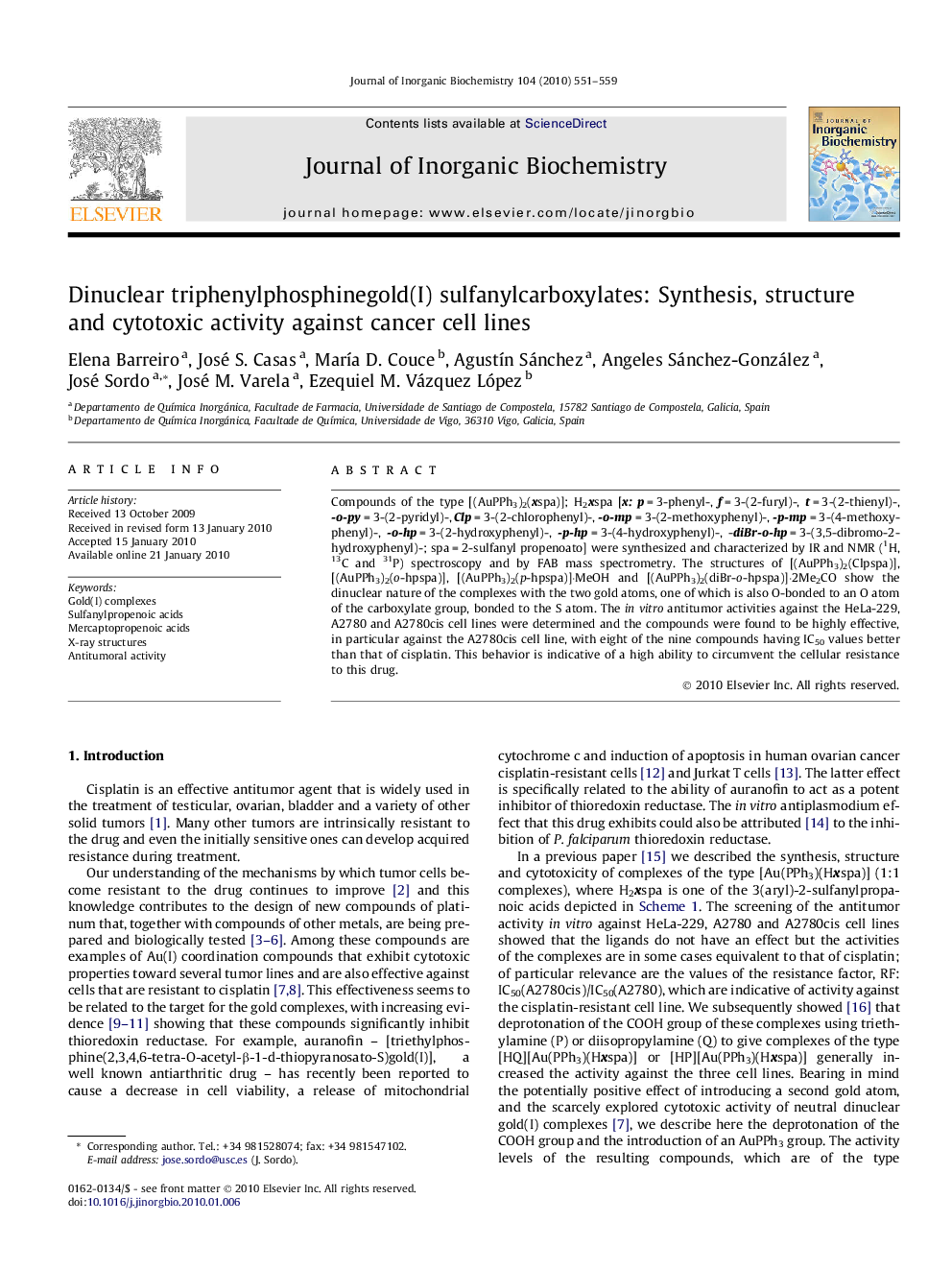| Article ID | Journal | Published Year | Pages | File Type |
|---|---|---|---|---|
| 1317968 | Journal of Inorganic Biochemistry | 2010 | 9 Pages |
Compounds of the type [(AuPPh3)2(xspa)]; H2xspa [x:p = 3-phenyl-, f = 3-(2-furyl)-, t = 3-(2-thienyl)-, -o-py = 3-(2-pyridyl)-, Clp = 3-(2-chlorophenyl)-, -o-mp = 3-(2-methoxyphenyl)-, -p-mp = 3-(4-methoxyphenyl)-, -o-hp = 3-(2-hydroxyphenyl)-, -p-hp = 3-(4-hydroxyphenyl)-, -diBr-o-hp = 3-(3,5-dibromo-2-hydroxyphenyl)-; spa = 2-sulfanyl propenoato] were synthesized and characterized by IR and NMR (1H, 13C and 31P) spectroscopy and by FAB mass spectrometry. The structures of [(AuPPh3)2(Clpspa)], [(AuPPh3)2(o-hpspa)], [(AuPPh3)2(p-hpspa)]·MeOH and [(AuPPh3)2(diBr-o-hpspa)]·2Me2CO show the dinuclear nature of the complexes with the two gold atoms, one of which is also O-bonded to an O atom of the carboxylate group, bonded to the S atom. The in vitro antitumor activities against the HeLa-229, A2780 and A2780cis cell lines were determined and the compounds were found to be highly effective, in particular against the A2780cis cell line, with eight of the nine compounds having IC50 values better than that of cisplatin. This behavior is indicative of a high ability to circumvent the cellular resistance to this drug.
Graphical abstractThe reaction of 3-(aryl)-2-sulfanylpropenoic acids (H2xspa), with triphenylphosphinegold(I) chloride in basic media afforded complexes of the type [(AuPPh3)2xspa]. The structures show a dinuclear nature for the complexes, which show significant invitro antitumor activities, in particular against the A2780cis cell line, indicative of a high ability to circumvent the cellular resistance to cisplatin.Figure optionsDownload full-size imageDownload as PowerPoint slide
